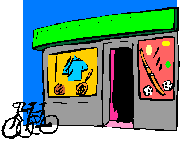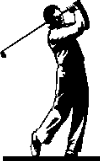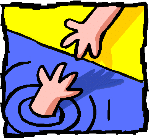Making the Social Product Available:
Distribution Channels
| The strategy defines the social
market mix for each target segment. Each sub-strategy will be
explained in relation to how it will respond to the
opportunities, threats and key issues that the plan identified
earlier. (Kotler and Roberto p. 278) |
Distribution
Channel
A network of institutions and agencies involved in the
task of moving products from points of production to
points of consumption |
A
Distribution Channel in Social Marketing
Point of Production: the social change campaign
Points of Consumption: the target adopters |
Distributing a Tangible Product
For tangible products, the channels and the
relevant issues for social products are much the same as for
traditional products. The same advantages of channels help
determine the choice of doing it yourself (in-house) or hiring
someone to do it for you (intermediary): economies of scale and
avoidance of overlap of functions. Who will do the better job most
efficiently and effectively?
Channel Level and Length
| Type of Marketing |
Origin |
Middle |
End |
| Traditional
Marketing |
Producer |
Intermediary |
Consumer |
| Social
Marketing |
Change Agent |
Intermediary |
Adopter |
Types
of outlets  |
| Location
of outlets |
|
Patronage
of Outlets |
| Patronage is an inverse
function of outlet's distance from target adopter |
| Adopters will travel only
within a certain threshold distance or travel time |
| Adoptions are dependent on
transportation factors, types, comfort and reliability
of transport |
Channel
Position - Location of a channel member in the channel network
Channel
Role - Behaviours expected of the channel member
 |
Exercise
Channel Roles |
What
behaviours are expected of each of the members of your
social marketing plan's channel of distribution?
|
|
| Managing
Channel Conflict |
 |
| Negotiation |
| Outside Help |
| Strengthen
Mutual Interests |
| Legal
Processes |
Distributing an Intangible Product
Channels is one of the most challenging areas of
any Marketing and conceptually one of the most interesting (says
she who did her doctorate in channels and is a little biased). It is
particularly interesting in the distribution of an idea, value, or practice.
 |
Exercise
Distributing Ideas |
How
do you distribute an idea?
|
 |
|
Marketers always talk about how the Four P's
are intricately interrelated and in the distribution of an idea or
value or practice we see it fully. The media, and particularly
Advertising, becomes the channel
Three Alternate
Models for the
Flow of Distribution of a
Non-tangible Social Product
 |
Exercise
Flow Models |
Which
model best fits your social product?
|
|
Mass Communication
Media
 |
Exercise
Mass Communication Media |
Using
the information in Table 8-1 of your text, decide which
of the four media would be best for promoting your
social product. This book was published in 1989 and
contains almost nothing about the web. How useful will
the web be in distribution of your social product?
|
|
Professionals and Volunteers
as Part of the Channel
| Channel |
Motivation |
Professionals
 |
Coercive or Legal Power
Rewards and Benefits |
Volunteers  |
Personal Interest and Need
Belief that Campaign Will Benefit Society
Desire To Help Other People
|
|